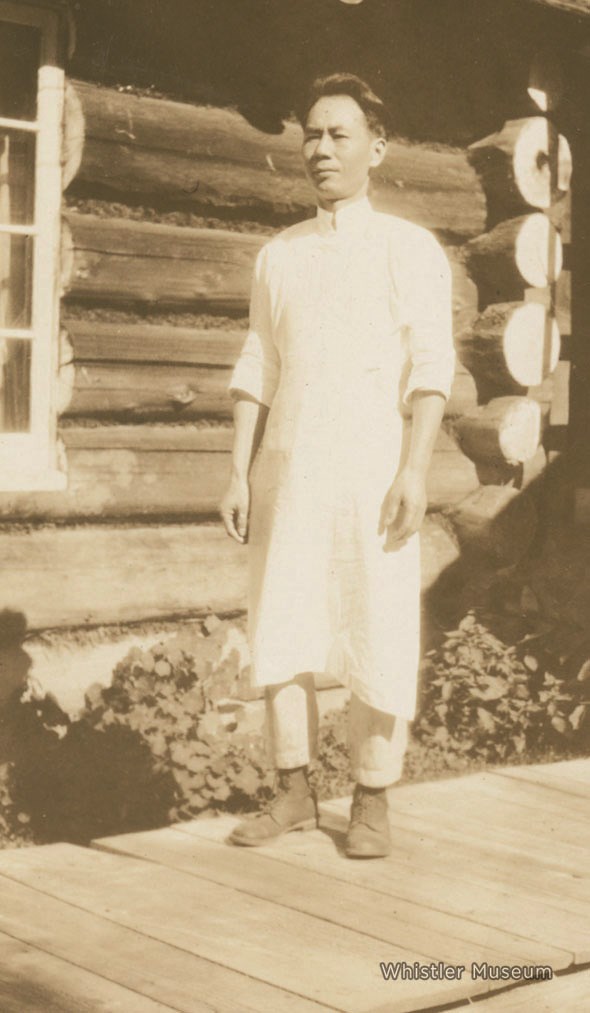Long before “locavore” was a trendy buzzword in the restaurant scene, it was simply the accepted way of life for those who had no other option than to live off the land.
The same is especially true for the earliest settlers of the Whistler Valley who, prior to any reliable road or rail service here, had to rely on subsistence farming to feed their families, along with the occasional horse-and-buggy ride down to Vancouver to supplement their supplies. And without a grocery store or market to speak of, most residents of what was then called Alta Lake had their own gardens growing fresh produce.
Tapley’s Farm, today a thriving residential neighbourhood, was the epicentre of the community’s agricultural production in those days, with the Tapley family operating a productive farm that included various grain and vegetable crops, an orchard, as well as cows, chickens and horses. Along with feeding their own family, the Tapleys also provided much-needed milk, veggies, eggs and hay to others in the community.
Prior to that, with the community still made up primarily of trappers, the diet of the day was unique, at least by modern standards.
Perhaps the most infamous trapper of that time was John Millar, namesake of Millar Creek, whose notorious background was as colourful as the cuisine he was known for. Rumoured to be on the lam from Texas Marshals for shooting two men dead, Millar was apparently as resourceful in the kitchen as he was with a pistol, serving everything from muskrat and bear haunch stew to Stellar’s jay pies for the hungry guests overnighting at his place along the Pemberton Trail, which connected the gold fields in the east to the coast in the west.
In fact, it was on one particular supply run in the early 1900s that Millar first met Alex Philip, who, along with his wife, Myrtle, is widely recognized as the founder of the community—although the couple weren’t the first settlers here.
The Philips’ famed Rainbow Lodge, built on the shores of Alta Lake, was for years the go-to spot for hungry diners looking for a homecooked meal. Myrtle was known as an excellent cook—her pies and preserves were legendary—feeding not just overnight guests at the lodge but railway cars full of passengers who made stops at the lodge on Sundays when the Pacific Great Eastern Railway came through for the day.
For what it’s worth, pies appeared to be a beloved staple of Alta Lake dinner tables back then.
“I think there was a lot of shortening and other materials like flour they were able to buy in bulk so that would be found in a lot of the foodstuffs they would be eating,” said Brad Nichols, executive director of the Whistler Museum. “It was a way of diversifying their culinary options.”
Despite her talents for baking, Myrtle was not the full-time cook at Rainbow Lodge. That distinction belonged to a young Chinese man, Lam Shu, who Alex had first hired to work at the Philips’ Horseshoe Grill in Vancouver. When business started taking off at the lodge, Alex brought him in to live and work there full-time in 1916. After a few years, Lam had honed his cooking skills to the point that visitors flocked to the lodge for the food alone, and his signature dessert, “Divinity Pie,” made from peaches and a custard meringue, lived up to its heavenly moniker.
“Rainbow Lodge was a major component of the draw up here, to be in nature and do the activities that they offered, but I think the food there was a major part of the reason a lot of people came up as well,” Nichols noted.
In the frigid winter months, the cuisine of Alta Lake narrowed considerably. Locals would typically spend much of the fall preparing produce, pickling and preserving fruits and veggies, to keep through the cold. Most year-round residents also kept root cellars, an essential component of any local kitchen at the time.
“There was a door cut in our floor in the kitchen, with a leather handle to lift and stairs going down under our house to put potatoes, carrots, cabbages, etc. in, as well as shelves for canned goods,” according to a 1989 letter written by Eleanor Kitteringham, who lived with her family at the Parkhurst Mill between 1948 and ’56.
Thanks to Nichols and the Whistler Museum’s trusty Whistorical blogs for informing much of this piece. Find them at blog.whistlermuseum.com.





